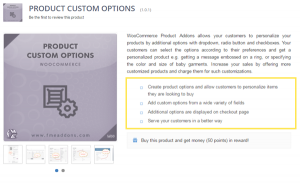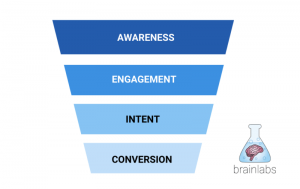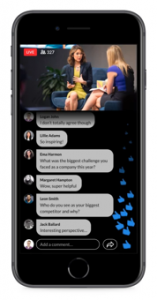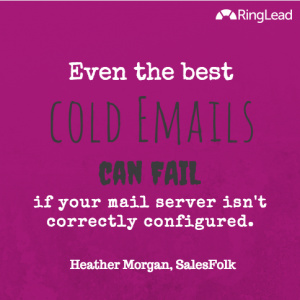
[Image Source: Andrew Bowden]
Your online presence has become the hub for all your marketing efforts. It’s the place were prospective customers engage with your business. So how do you make sure that, when they arrive at your website, you deliver the best possible experience for them?
What’s the buyer journey all about?
It’s the steps we all take, just about everyday, on the path to making a purchase. It all starts with the realization that you have a need for something, then transitions into the process of investigating possible solutions for solving that need and ultimately goes to selecting a vendor to fulfill it.
Let’s take a closer look at the 3 stages a potential buyer goes through on the way to selecting a vendor:

- Awareness – The person realizes they have an issue that needs to be resolved, so they start researching.
- Consideration – They have a clear idea of the problem they are trying to solve. Additionally, they’ve researched a number of possible solutions to the challenge.
- Decision – Once all the possible solutions have been researched, it’s time to choose a vendor to help them solve their problem.
Why’s it so important?
In our times, when most companies are trying hard to be more customer-centric, you have to make sure that you’re making the buying process more enjoyable for prospective customers. And that you’re targeting the right audience.
You’ve probably taken the time to create 2 or 3 buyer personas to help create content that really resonates with your target market. Now it’s time to take it a step further and get it to them at the right time in the buying process.
56% of U.S. email users unsubscribe from a business or nonprofit email subscription because of content that is no longer relevant. (Source: ChadwickMartinBaily)
How do you make sure your content stays relevant?
Keep thinking about how you can make the journey more enjoyable for your potential buyer.
How you can give them information that is relevant at each stage of their journey?
how do you know which piece of content to put in front of them at each stage of the cycle?
Here’s what you have to do: by mapping relevant content offers to each stage of the buyer’s journey based on the research they are doing, the type of terms and keywords they’re using, you’ll accompany your potential buyers every step of their way to deciding you’re the right fit for them.
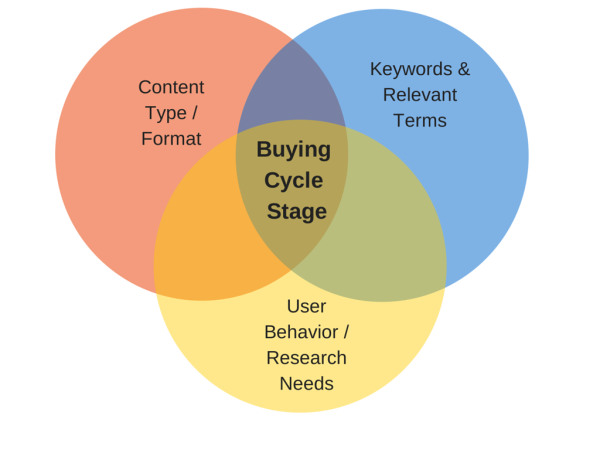
During the Awareness Stage a person starts experiencing symptoms of a problem or need.

Perhaps they travel often and want to take movies, music and photos along on every trip. However, each trip they seem to run out of things to watch. They can’t seem to get enough movies onto their MacBook Air – the problem, disk space.
At this point our traveler isn’t likely to be interested in an hour long webinar explaining the benefits of a Citrix ShareFile solution. I use this as an example because I got a call, about a week ago, from a Citrix sales person, out of the blue wanting me to attend his demo. I don’t have the need for this service or solution. It’s just another one of many irritating sales calls. Block that number.
Our buyer is still trying to understand the exact nature of their problem. Their research is focused on vendor neutral 3rd party information, using content such as:
- eGuide / eBook
- Expert content (blogs on storage options for travel)
- Research reports
- Analyst reports
- White papers
They’re using terms relevant to that stage of their purchasing journey – during the Awareness Stage they focus on issue and opportunity type terms.
- Troubleshoot
- Issue
- Resolve
- Risks
- Upgrade
- Improve
- Optimize
- Prevent
Once they’ve clearly defined their need or problem, they’re able to put a name to it and can start researching and understanding all their options. They’ve transitioned into the Consideration Stage of their journey.

At this stage, our buyer knows that an external drive is likely to be the best solution to their problem. But what kind of external drive? As a travel writer, something rugged makes most sense, so they’re going to search for content like something that makes a comparison on the available portable solutions.
- Comparison white papers
- Expert guides
- Live interactions
- Webcast/podcast/video
The kind of terms they’re going to use include:
- Solution
- Tool
- Provider
- Device
- Service
- Software
- Supplier
- Appliance
Finally a buyer enters the Decision Stage of their journey.

They’ve picked out their solution and have started listing all the possible options. In this case perhaps they’ve come up with:
- Western Digital My Passport hard drive
- LaCie Rugged All-Terrain
- Silicon Power 1TB Rugged Armor
- Transcend 1 TB USB 3.0 External Hard Drive
Now it’s time for vendor comparisons, product demos, trial downloads and live demos. In their search, our buyer is going to be using terms like:
- Compare
- versus
- vs.
- comparison
- Pros and Cons
- Benchmarks
- Review
- Test
In our example, the buyer went for the LaCie Rugged All-Terrain drive. Why? Because he likes the color orange and it looks like the drive could be dropped from the 21st floor and still survive.
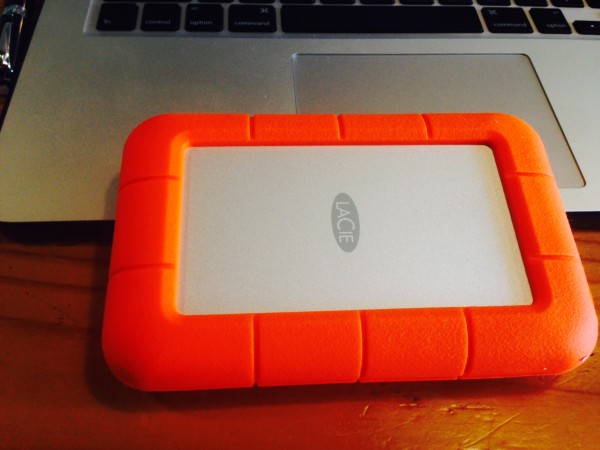
To help you get started organizing content for your buyers journey, download a copy of our free eBook on How to create Buyer Personas for your Business.
Business Articles | Business 2 Community
(379)
Report Post
